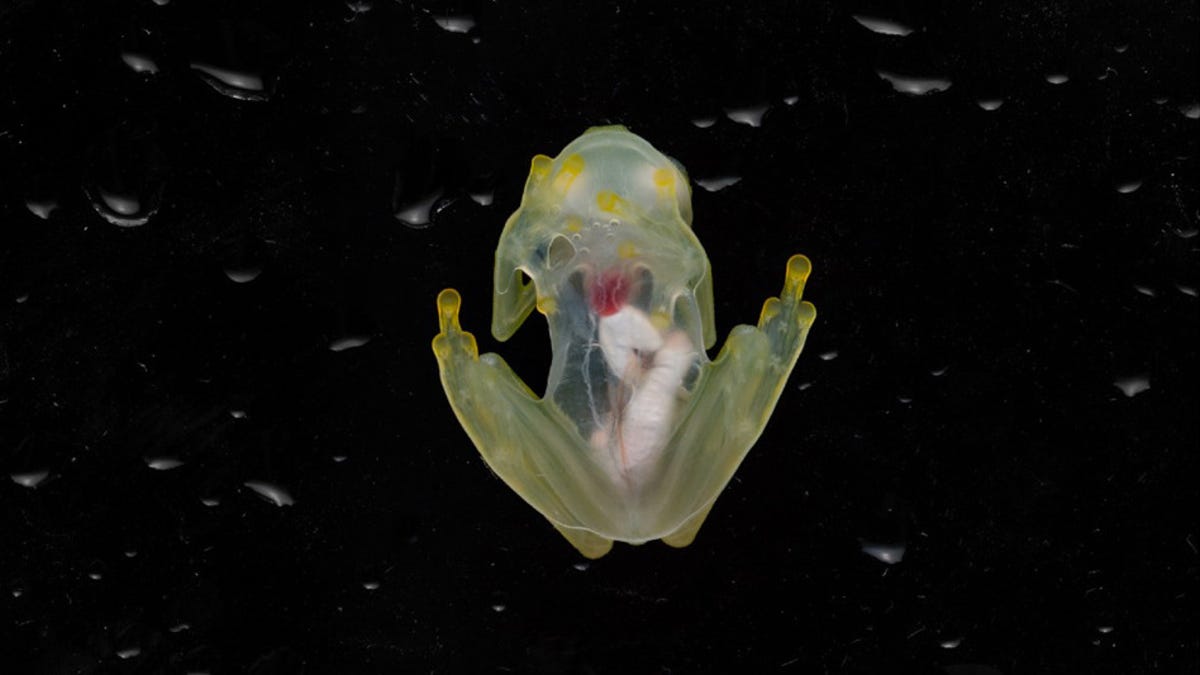Newly Discovered See-Through Glass Frogs Already Endangered
The delicate frogs found in the Andes have see-through abdomens.
Glass frogs look unreal. The small amphibians have see-through abdomens that offer a window onto their internal organs. A team of researchers described two newly identified species of glass frogs and sounded an alarm on the animals' delicate conservation situation near mining sites in the Andes in Ecuador.
The newly described species are the Mashpi glass frog (Hyalinobatrachium mashpi) and the Nouns' glass frog (Hyalinobatrachium nouns). A close look at their DNA and their distinct calls helped distinguish them from other glass frogs. The team published a paper on the animals in the journal PeerJ last week.
Ethereal-looking glass frogs are found across the Andes. "A lot of these sites are incredibly remote, which is one of the reasons why we were able to discover new species," environmental science Ph.D. candidate and study co-author Becca Brunner said in a Berkeley Rausser College of Natural Resources statement. "You can walk just a couple of kilometers over a ridge and find a different community of frogs than where you started."
The researchers have recommended both new species be listed as endangered according to the guidelines of the International Union for Conservation of Nature, the organization that maintains the IUCN Red List of Threatened Species, a catalog that tracks the conservation status of animals and plants.
A male Mashpi glass frog stands guard over its eggs before they hatch.
The frogs are found in forests where agriculture and mining are threatening their environment. The scientists are concerned about pollution and loss of habitat. "If a mining company came in and destroyed the few streams where we know these frogs exist, that's probably extinction for the species," Brunner said.
The glass frogs highlight the biodiversity of the Andes and hint at how much is left to be learned about the animals that live in the mountain range.
Evolutionary biologist Juan Guayasamin at the Universidad San Francisco de Quito in Ecuador is a co-author of the paper. "The problem is not finding new species, the real challenge is having the time and resources to describe them," Guayasamin.
These glass frogs were found in time to share them with the world, but other threatened species might not be so lucky.


